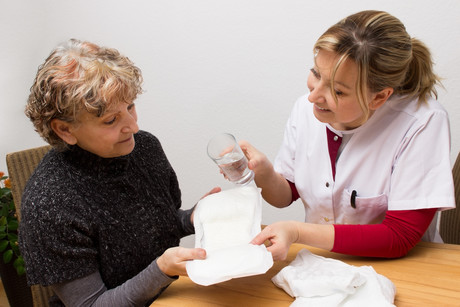Sustainable superabsorbents

Sustainability is the next stop for every industry and organisation to achieve cost reduction with maximum profit. Healthcare organisations are marching towards the green pathway by making use of eco-friendly products. Initiatives are being implemented to achieve sustainable solutions in hospitals to save costs and improve efficiencies.
According to a report from Johnson & Johnson Medical Device Co., 88% of healthcare executives and 92% of physicians surveyed believe sustainable solutions can bring a radical change in terms of long-term savings. With that in mind, medical superabsorbent polymers (SAPs) are being manufactured using raw materials that favour this eco-friendly trend, and efforts are being made to incorporate them into healthcare facility waste management programs.
What is an SAP?
Currently, SAPs are manufactured using petroleum-based vinyl monomers that reflect relatively lower biodegradable attribute and eco-friendliness. SAPs are used in such products as wound dressings, nappies, feminine hygiene pads and incontinence pads, and are designed to absorb fluids.
With the rising concern for environment protection and growing green chemistry, renewable polymers have drawn significant attention against the backdrop of low cost of production, resource abundance and biocompatibility.
Lately, natural polymers are being used to manufacture SAPs, such as chitosan, starch, cashew gum, cellulose, rice husk and raw bran, to name a few.
Of these, chitosan, an abundant polysaccharide of natural origin, offers a superior biodegradability. These radical changes are likely to be the future, introducing a cohort of opportunities for manufacturers of SAPs.
Eco-friendly hydrogels to enforce the sustainability initiative
Manufacturers that use SAPs are developing products like baby nappies with a focus on thinness, for optimum level of comfort, and reducing environmental impact.
To support this, governments from various countries are offering incentives to carry out research programs to develop green SAPs. For instance, the ‘Make in India’ policy offers several incentives for R&D initiatives to carry out green practices.
With a significant demand for SAPs in the healthcare domain, new developments are being carried out to complement their use. Swift technological advances coupled with increased funding from stakeholders and investors have aided manufacturing of novel medical care products in order to enhance performance.
Recently, chitosan-based SAPs have been gaining more ground on the back of their excellent absorption properties along with higher biodegradability, biocompatibility and antibacterial properties.
Recycling absorbent hygiene products
Against the backdrop of growing concerns pertaining to medical waste, efforts are being made to transform and re-use hospital waste material. One such innovative idea includes the effective treatment and disposal of waste absorbent hygiene products (AHPs) made from SAPs that are used in feminine pads, baby diapers and adult incontinence products. Fater SpA has patented a new technology that can recycle waste from absorbent hygiene products previously considered non-recyclable.
Companies have been focusing on recycling valuable material to develop other products, thereby limiting the need to extract virgin material and therefore reducing greenhouse emissions and environmental footprint.
Initiatives complementing sustainability
Several measures are being carried out to initiate sustainability in the SAP space across various healthcare facilities. Some of the steps being undertaken to incorporate sustainability into routine operational tasks are outlined below:
- Carrying out waste audits of current and future practices.
- Establishing categories of waste that need sorting along with precise guidelines for their disposal.
- Increasing awareness among facility caregivers and staff by explaining waste segregation rules, and organising training programs of the recycling programs and waste management systems.
- Addressing all identified non-compliances during waste handling or during audits by facility management.
- Setting key performance indicators for financial savings and risk management resulting from recycling AHPs made from medical superabsorbent polymers, and monitoring results.
- Installation of adequate waste containers in facilities.
These initiatives can be integrated in tenders that are issued by healthcare facilities for waste handling with no surplus costs, in turn facilitating sustainability.
For more information, visit the research study on Medical Superabsorbent Polymers Market by Fact.MR.
Local spirit: new Footscray Hospital, Melbourne
The new Footscray Hospital will be partly a result of local community campaigning —...
Designing with compassion
Balancing calm, serene spaces with acute facilities, the Anam Cara House is a unique hospice...
La Trobe Private Hospital reopens after redevelopment
La Trobe Private Hospital has reopened its doors following a complete redevelopment, giving...









